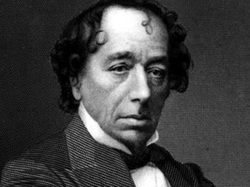
Statistics can indeed be made to lie (it was one of the first things I learned in my stats class), but nevertheless, as a people, Americans love numbers.
Here are some numbers that may help shed some light on the business of publishing in the U.S.
- 2012 fiction books published with an ISBN: adult fiction 67,254; YA and juvenile fiction 20,339
- 2012 Net book sales: $27.1 billion
- 2011 books published: traditionally published 347,178; self-published 235,000
- 76 percent of all books released in 2008 were self-published
- Roughly 50 percent of all fiction published (traditional or self-published) is a romance, mystery, sci-fi, or fantasy story
- 1900 independent bookstore locations in 2012
- 1 percent chance across all genres of a published book being stocked in a brick-and-mortar store
- 20 percent of all books sold in 2012 were e-books
- Approximately 185 U.S. institutions granting MFAs in fiction
- Best markets for fiction sales: New York, Los Angeles, Chicago, San Francisco, Washington D.C.
- 600-700 books received weekly by LA Times for review consideration
- 197,768 self-reporting writers in 2009
- 39 percent increase between 1990 and 2005 in the number of writers and authors
Sources: Publishers Weekly, “Artists and Arts Workers in the United States Findings from the American Community Survey” (2005-2009) and the “Quarterly Census of Employment and Wages” (2010), American Booksellers Association, Bowker Books in Print, Association of Writers and Writing Programs, Huffington Post, LA Times, The New York Times.
From: How Many Novelists are at Work in America? By Dominic Smith
What do these numbers tell us?
The first number that should jump out at you is 1. One percent of all books sold in the US are stocked in an actual bookstore. But far more than 1 percent of writers in the US publish hard copy, either through publishers, or on their own dime.
Yet (here comes the second important number) 347, 148 books (more than half) were published by traditional publishers. What this means is that your chances of seeing your book on a bookstore shelf are slim, even if you get published by one of the big houses.
More than anything else, these numbers reveal the true reason writers are turning to self-publishing (76% in 2008), and epublishing. Authors want their books to be read. And if there is next to no chance of getting exposure, even with a publisher to back you, you are going to jump ship and self publish.
Despite the promises of traditional publishers - distribution being high on the list - these numbers don't lie.
 RSS Feed
RSS Feed